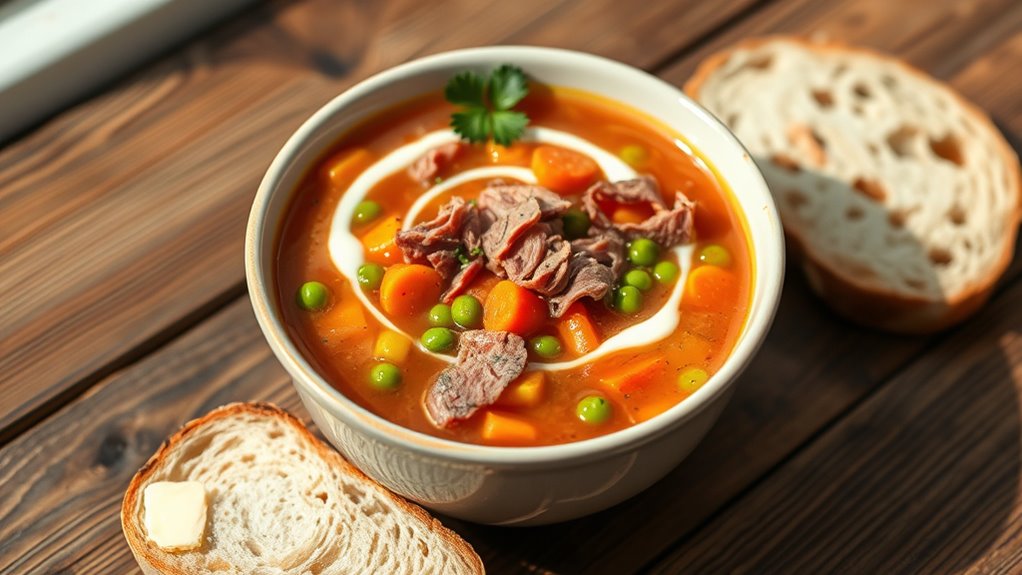This pastrami soup starts with a sturdy base: sauté onions and garlic, then add diced pastrami and crisp vegetables for their aroma. Pour in beef broth, a touch of tomato paste, and a whisper of paprika, bay leaves, and peppercorns to deepen the flavor. Let it simmer gently, skimming foam, until the meat is tender and the broth rich. Finish with a splash of vinegar or lemon for brightness, and you’ll taste comforting smokiness that hints at more to come.
Ingredients and Quantity
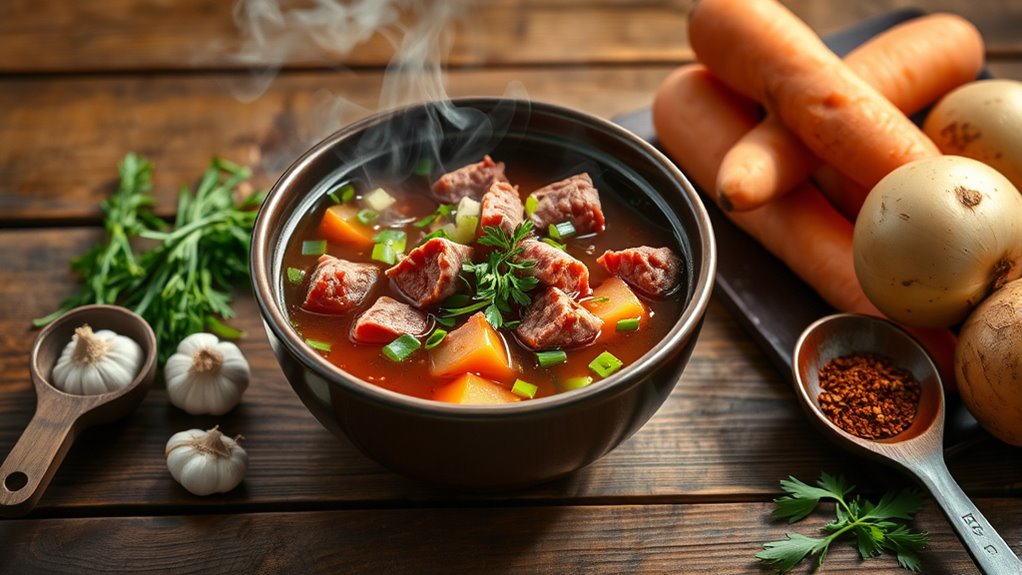
To make the pastrami soup, gather these ingredients in measured amounts: thick-cut pastrami, onions, garlic, potatoes, carrots, celery, beef broth, tomato paste, and a splash of tomato or purée for depth, with bay leaves, black pepper, and a pinch of paprika for warmth. You’ll map Pastrami sources and Flavor combinations to taste, choosing cuts and smoke notes that suit your freedom to improvise. This section stays focused on ingredients and quantities, not steps.
| Option | Weight/Amount | Notes |
|---|---|---|
| Pastrami | 12 oz | Deli or homemade |
| Vegetables | 1 cup each | Onions, carrots, celery |
| Liquids | 4 cups broth + 2 tbsp paste | Depth and body |
Preparations
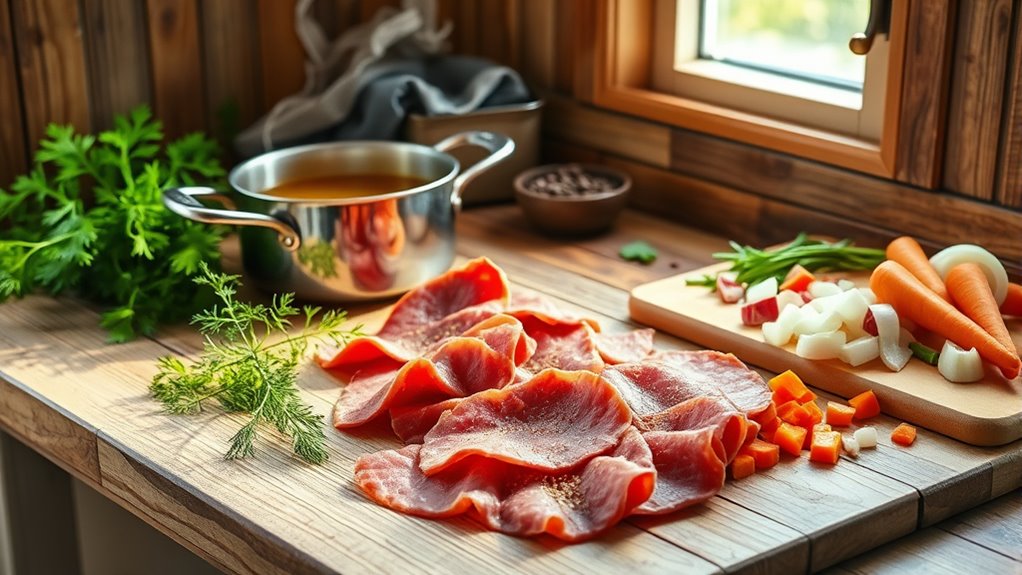
Begin by prepping your mise en place: dice the onions, mince the garlic, and cube the potatoes and carrots to uniform sizes so they cook evenly. In this Preparations section, you’ll focus on preparation methods that keep flavor intact and timing tight. Season lean pastrami lightly before any simmer, so its notes don’t overwhelm the broth. Separate and trim fat, reserving a small amount for aroma, then chop it into small pieces to render later. When selecting ingredients, prioritize fresh aromatics, crisp celery, and paprika for a gentle smokiness that complements, not competes with, the pastrami. Gather bay leaves and peppercorns for depth. This step isn’t about gadgets; it’s about deliberate, practical assembly that sets the stage for a bold, satisfying final bowl.
Kitchen tools or Kitchenware Required
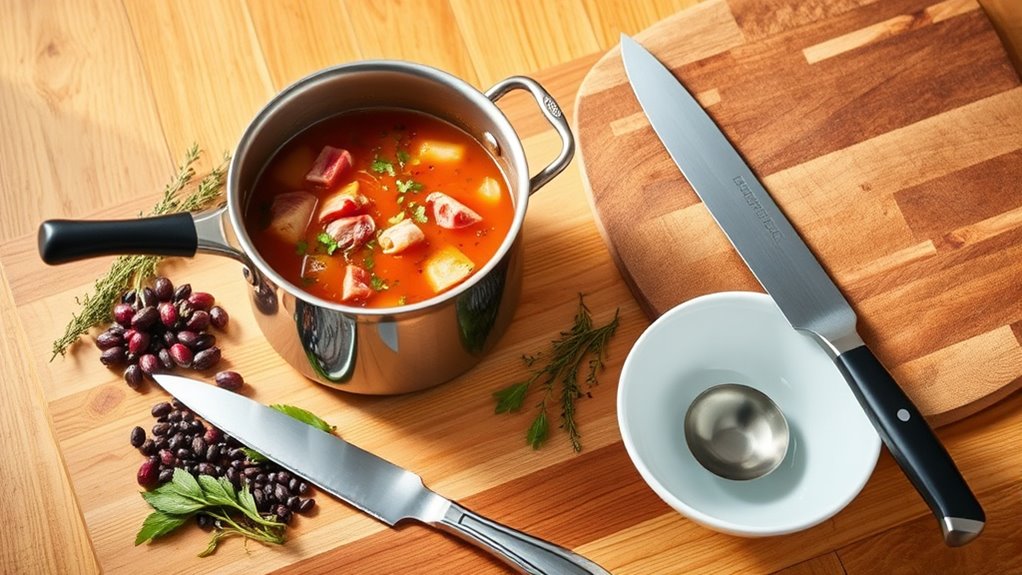
A sturdy pot, a sharp knife, and a trusty ladle are your bread-and-butter tools here, turning ingredients into a cohesive, comforting bowl. You’ll want a solid soup pot for simmering, plus a cutting board that stays steady under pressure. Keep a comfortable set of measuring spoons and a timer at the ready to refine every step. Simple tools, bold results, with no frills slowing you down.
| Tool | Purpose | Benefit |
|---|---|---|
| Soup pot | Simmer base | Even heat, rich flavor |
| Cutting board | Prep space | Safe, efficient chopping |
| Sharp knife | Cut meat/veg | Clean, precise slices |
Choose reliable gear; cookware should feel like an ally, not a burden.
How to Cook
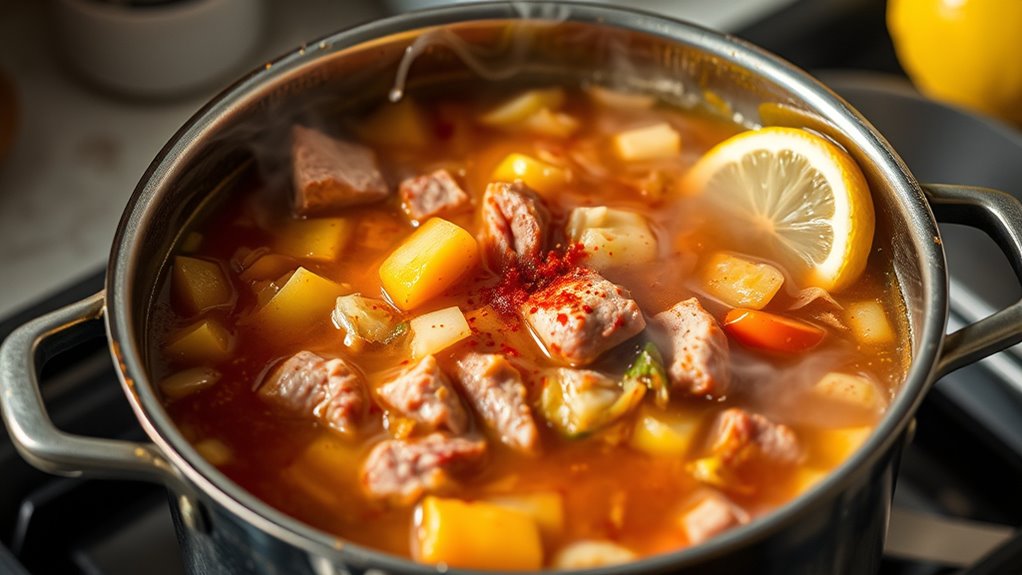
- Sauté onions and garlic in a sturdy pot until fragrant and translucent.
- Stir in chopped pastrami and your chosen vegetables to bloom their flavors.
- Add stock and simmer gently, skimming any foam for a clean broth.
- Season with salt, pepper, paprika, and a dash of caraway if desired.
- Taste often and adjust seasonings, allowing flavors to mingle without rushing.
- Use simmering time to tenderize the meat and vegetables without overcooking.
- Finish with a splash of vinegar or lemon juice to brighten the aroma.
- Keep the heat steady to avoid boil-overs, monitoring for a cohesive, satisfying depth.
How to Serve
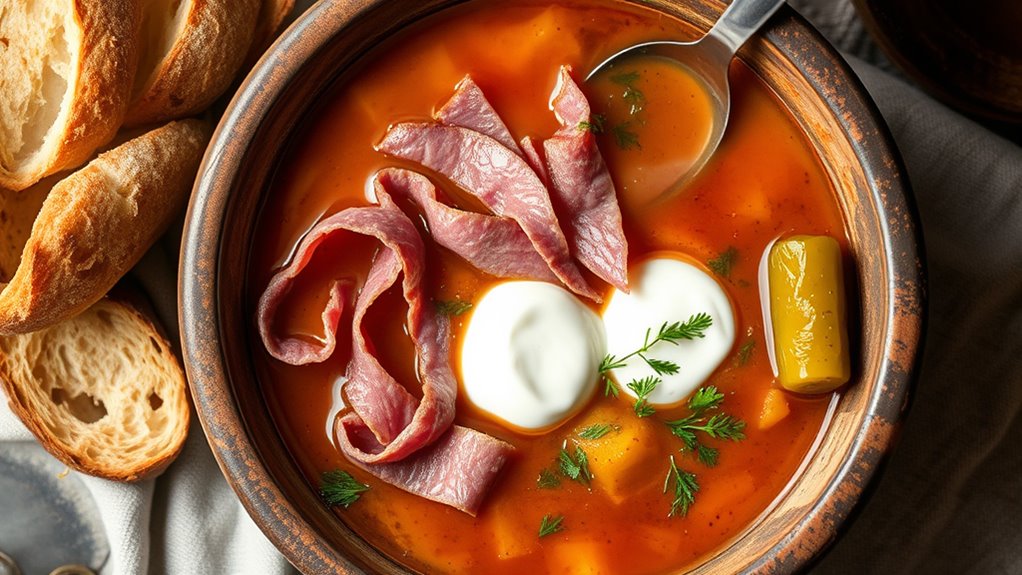
Once the soup is hot and you’ve ladled it into bowls, set out a simple assortment of accompaniments: crusty bread for dipping, a dollop of sour cream or yogurt to mellow the punch, and a light scattering of chopped dill or parsley for color. You’re crafting a moment, not just a meal, so lean into presentation ideas that feel earned and honest.
- Serve in wide bowls to cradle steam and aroma
- Garnish with a few thin ribbons of pastrami and a whisper of green
- Offer a hot sauce or pickle on the side for adjustable heat
Serving suggestions emphasize balance: bold flavors, practical plating, and a sense of freedom in every bite.
Tips
To get the most flavorful pastrami soup, start with quality stock and taste as you go, adjusting salt and heat in small increments. In Tips, you tune the pot with practical, actionable moves. Use precise cooking techniques: bloom onions and garlic first for aroma, then layer pastrami for depth without overcooking. Skim foam early to keep the broth clear, and temper heat to avoid bitterness. Flavor enhancements come from balancing acidity with a splash of vinegar or a squeeze of lemon, plus a finishing note of fresh herbs. Taste often, adjust pepper, and respect your palate’s freedom to decide. Keep it simple, purposeful, and consistent, so every bowl feels earned and satisfying.
Food Value and Benefit
Pastrami soup offers a nourishing and flavorful meal packed with essential nutrients. This dish combines lean pastrami meat with simmered vegetables to deliver a balanced and satisfying experience.
Benefits of eating pastrami soup include:
- High-quality protein: supports muscle repair and overall energy.
- Rich in iron and zinc: essential minerals that promote immune function and oxygen transport.
- Contains B vitamins: important for energy metabolism and nervous system health.
- Provides dietary fiber: from vegetables, aiding digestion and supporting steady mood.
- Satiety: a filling and savory option that helps with portion control without compromising taste.
This recipe contains key vitamins and minerals such as vitamin B6, vitamin B12, iron, zinc, and dietary fiber, making it a practical and heart-friendly choice when consumed with mindful portion sizes and paired with greens to balance sodium content.
Frequently Asked Questions
Can I Substitute Beef for Pastrami in This Soup?
Yes, you can substitute beef for pastrami, but expect different flavor and texture. You’ll notice flavor differences, so adjust seasoning. Try beef alternatives like brisket or sirloin, and balance salt, smoke, and chili to suit your palate.
How Long Does This Soup Keep in the Fridge?
In the fridge, this soup keeps about 3 to 4 days. For best flavor, store properly and reheat gently. Pastrami storage tips: seal tightly, use airtight containers. Soup shelf life depends on freshness, use-by dates, and safe handling.
Can I Freeze the Soup Successfuly?
Yes, you can freeze it. For example, you freeze leftovers in airtight storage containers after cooling. Use freezing techniques like label-and-date, and leave space. Thaw in fridge, then reheat gently for best flavor and texture.
Is Pastrami Fat Content a Problem Here?
Pastrami fat content isn’t a problem if you balance portions; savor the pastrami health by using lean cuts and trimming excess fat. Fat benefits show up when you control portions, flavor, and timing in your cooking freedom.
What Are Good Gluten-Free Thickeners for This Soup?
Thicken with purpose: you want gluten-free options, so cornstarch alternatives or potato flour are ideal. You’ll keep texture silky, flavor bold; you’ll stir patiently, adaptively, and savor the freedom to tailor heat, mouthfeel, and richness confidently.
